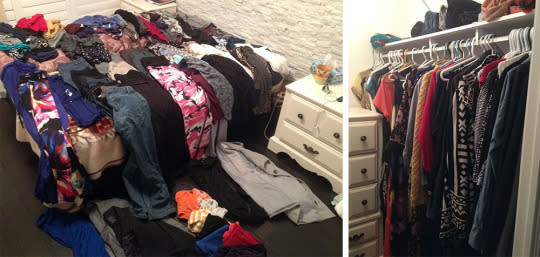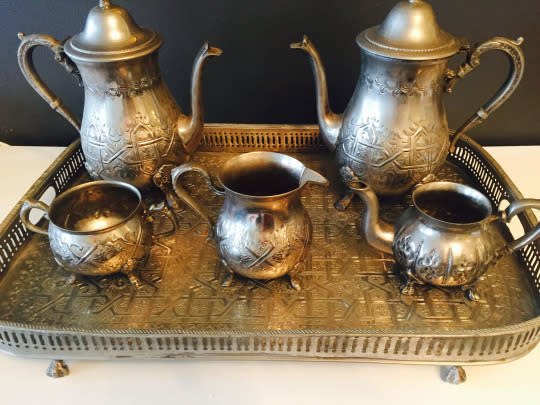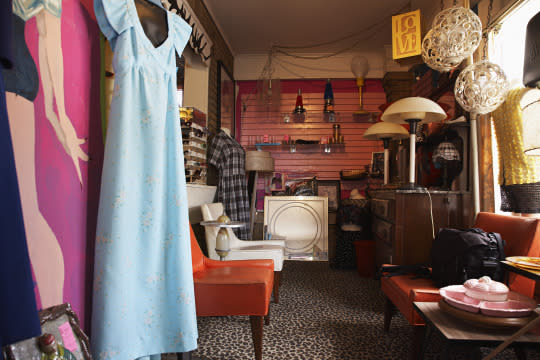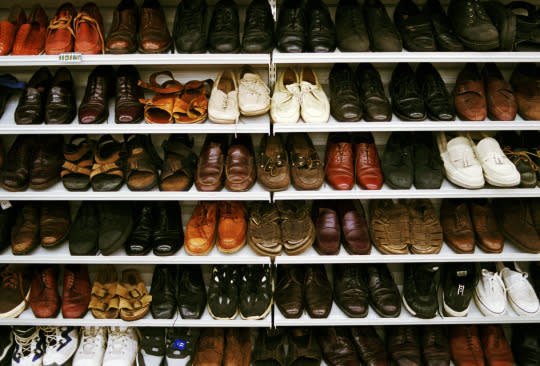‘I Went 200 Days Without Buying Anything New. Here’s How You Can Do It, Too’
A few months ago, after my father passed away, I decided to challenge myself to buy nothing new for 200 days. Emptying out my dad’s old apartment motivated me. The volume of stuff we had to dispose of shocked me to my core. I felt that I had to change my lifestyle realize how dreadfully temporary ownership is of any material. I decided to downsize my possessions and only buy secondhand items, or borrow, for 200 days.
You might say to yourself, “I’d never be able to do that.” I’m here to counter that voice with a huge “Yes, you can!“
This article will guide your through the rules, tools and tricks you need to be successful during your own buy nothing new challenge.
While the rules are fairly simple, going 200 days without buying anything new is challenging! You have to work to get the stuff you want. You might have to search for days for something you could get in 5 seconds at the store.
And that’s the point. Because of the difficulty, you will likely go on living without the stuff you want unless you really need it.
Remember that creative solutions – like secondhand items and borrowing – are your friends. As you’ll realize during your own challenge, many items are easily found pre-owned.
The Exceptions to the Rule
Certain items are either impossible or prohibitively difficult to source secondhand. This challenge should make life easier, not more difficult, so here’s a list of items you may want to exempt for your 200 days:
1. Groceries. You’ll need food and household items such as toilet paper, toothpaste, floss, and hygienic items, and these are difficult to source pre-owned. Food is a necessity you need to buy new, unless you are open to dumpster diving. Note: This does not include makeup, hair products beyond shampoo/conditioner, and other nice-to-have beauty items.
2. Medicine. Prescriptions, over-the-counter medicines, and contraception are allowed – unless you want another surprise at the end of your challenge.
3. Required specialty items. If you need to buy parts to fix your car, you could buy these new. Another example is medical equipment.
4. Cleaning equipment. Depending on how hardcore you are, you could exempt cleaning items from your list. I took an opportunity during my challenge to experiment with minimalistic cleaning methods, but the choice is yours.
5. One brand-new item. Two hundred days is a long time, and there may be hard-to-find items you simply can’t source pre-owned. My item was rock-climbing shoes, which I caved and bought, adding another day at the end of my challenge to make up for this slip up. Allow yourself one item when you search high and low but simply cannot find pre-owned.
I don’t recommend you pre-buy anything before starting out. The rules are flexible enough for you to purchase everything you really need.

My wardrobe before and after the challenge.
Biting the Bullet
Start the first month of the challenge by de-cluttering. Go through your possessions, and only keep the stuff you use and love. Always ask yourself, “Is this something the next generation would have use for?” If the answer is no, the item most likely should be thrown or given away.
I got rid of:
- My wedding dress
- Kitchen duplicates and hardly used countertop items, such as my blender
- Many bags of clothing, accessories and shoes
- Knick-knacks, old awards, useless paperwork
- Memorabilia
- Excess cosmetic items
- Photos
I was pretty aggressive, and got rid of things I thought I’d keep forever. Having to throw away items my father regarded in the same way made me realize how few of these things survive past your lifetime.

A memento I kept: My father’s old tea set from Morocco, his country of origin.
Could You Borrow It?
How often is your car spent in park? How often do you use a vacuum cleaner? How many times have you worn that $200 dress? Did you make it through that whole gallon of milk before it went bad?
It seems that there’s a chance in each of these cases for some sharing, borrowing and waste reduction!
Think of the huge potential. If everyone just shared their tools with one other person, we’d need to create and own half as many tools. We wouldn’t waste so much space and resources.
Don’t be afraid to ask. If the idea of getting to know your neighbors intimidates you – something I’ve yet to do myself – remember that social media is your friend. It’s as easy as a request on Facebook. I’ve done this with great results!

(Photo: moodboard/Corbis)
Meet Your Not-So-New Best Friend
It’s inevitable that you will need to buy something. So what’s the first thing you do? Normally, you’d just run to the mall. Instead, you’ll be running to the thrift store.
Many people scoff at thrifting, but it is essential for your 200 days. They contain general household items such as utensils, plates, candles, frames, decorations, and clothing, and often in new or like new condition. During my challenge, I encountered many items still in their original packaging, with tags.
Shop Away … But Only Online
You may not find your item at a thrift store – in that case, you’ll have to scour to the online classifieds.
Sites like like Craigslist are especially helpful when you’re looking for a particular item. For example, let’s say you need a new broom. It’s fairly unlikely that you walk into a thrift store and find a decent-condition broom. Online classifieds are a much higher possibility.
Online classifieds offer targeted searches in your local area, with a huge pool of results. If you don’t find what you need, don’t worry.. There are many other venues available to you to avoid buying something new.
Turn to Your Communities
Even online classifieds have their limitations. Sometimes, the distance to pick up items is unreasonably far. Results within my geographical region included items located a half-hour drive away. Not worth it for a $5 item. Plus, the anonymity can make things rather scary.
Luckily, we are in the midst of a huge social buying revolution!
My first exposure to this concept was Facebook buy/sell groups. These hyper-local merchants double as a place to shop and a support group for each other in ways beyond avoiding new stuff, like finding lost pets, answering community-related questions and serving as a lost and found. They are commonly ran by a devoted administrator who ensures that things are fair and safe for everyone.
Many entrepreneurs have noticed the success of these Facebook buy/sell groups and have starting making dedicated platforms for social selling, such as VarageSale, Clamour or OfferUp.
These platforms really have huge potential in terms of helping us localize our economies, and help us recycle and reuse items.
Don’t Buy, DIY!
There are lots of things you can make on your own. Many food items are healthier, cheaper and yummier when they’re homemade. Bonus: The planet is a little happier with less packaging, transport and storing involved in store-bought packaged foods.
It doesn’t end at food. Reclaim the lost art of making something with your own two hands. It might not be a solution for everything you need or want during your challenge, but basic sewing, knowledge of tools and cooking will take you much further than you can imagine. Plus, handmade items make divine gifts.

(Photo: Bryan Mullennix/Ocean/Corbis)
Let it Go
The last thing you can do, when all else fails to find your item, is to let it go. Just accept that you cannot have this item and you’ll have to wait. This might be something you haven’t done in a while, and you’ll find that when you let go of your desire for stuff, it frees up a lot of energy.
Don’t use your 200 days challenge to simply buy everything you usually would, except secondhand. Use it as a chance to experiment with minimalism and pay close attention to how you feel. Spoiler alert: you’ll feel much better.
Go for It!
I’ve now equipped you with all you need with all of the tools and knowledge you need to have a successful challenge. Set a date, good luck and have fun.
Assya Barrette is a blogger at GreenHighFive. Check out her free email course on how to buy nothing new here.
Let Yahoo Makers inspire you every day! Join us on Facebook, Twitter, Instagram, Tumblr and Pinterest.
